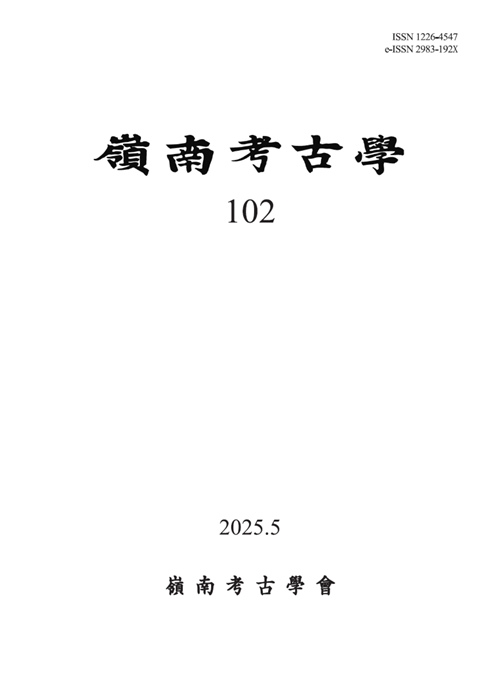합천지역 고분군의 시·공간적 성격 - 1981년 동아대학교 박물관 발굴 삼가고분군을 중심으로
A Space-Time Analysis on the Ancient Gaya Tombs in Hapcheon Region : Focusing on Hapcheon Samga Ancient Tomb Complex Excavated by the Dong-A University Museum in the Year 1981 -
- 11

1981년 동아대학교 박물관 발굴 합천 삼가고분군은 5~6세기대 가야가 신라에 의해 편입되는 과정에서 축조된 것으로 알려져 왔었다. 그러나 최근 발굴조사에 따르면 1~2세기에 축조된 목관묘도 확인되었고 4~7세기에 해당하는 유물과 유구들도 나타났다. 주목되는 것은 삼가고분군의 수혈식석곽묘 유구와 출토유물의 특징에서 가야문화가 소멸하고 신라의 문화가 유입되는 과도기에 있어 백제적 요소가 부분적으로 나타나고 있다는 점이다. 추가장 형태의 다곽식 제1호분의 D·E유구에서 수습된 Ⅲ-A·B형 단추형 유개단각고배는 신라문화의 유입을 반영하고 있으며 제1호분 D유구의 철제 관고리, Ⅱ-A·B유형 환상형 유개단각고배 그리고 방형 플랜의 우편향 횡구식석실묘인 제3·7호분은 백제문화의 접근이라는 고고학적 자료라고 생각된다. 따라서 합천 삼가고분군은 1~6세기 중엽까지 가야의 유력 정치체에 의해 축조되었고 6세기 중반~후반 가야소멸기에 있어 가야·신라·백제문화가 서로 접촉되는 과도기적 양상을 반영한 고고학적 결과라고 할 수 있다.
The Hapcheon Samga Ancient Tomb Complex was constructed during 1~7th century from Samhan era to the time when Shilla gradually began to occupy western Gaya regions. According to the nature of the excavated artifacts and the remaining structures of the Samga Tumuli No.1 one could easily notice the transition in cultural phenomena from preceding Gaya to Shilla. It is noted that cultural remains of Baekjae were also spoted from some parts of the tombs. The ‘Short-Mounted Dish(type Ⅱ-A · B)’ unearthed from Tombs labeled as D and E of the ‘pit-type stone chamber’, built in an ‘added-burial style’ reflects the introduction of Shilla’s culture to this Hapcheon Gaya region. Also a number of excavated iron-rings that were used as an ornamentation of the wooden coffins demonstrate the Baekjae’s earlier cultural influence to this region. In conclusion, it could be said that this Hapcheon’s Samga Ancient Gaya Tomb Complex (the one especially excavated by the Dong-A University Museum in the year 1981) is the manifestation of consistent cultural interchange among Gaya, Baekjae and Shill during the early 5th to late 6th century.
Ⅰ. 머리말
Ⅱ. 구조와 출토유물
Ⅲ. 시·공간적 성격
Ⅳ. 맺음말
(0)
(0)